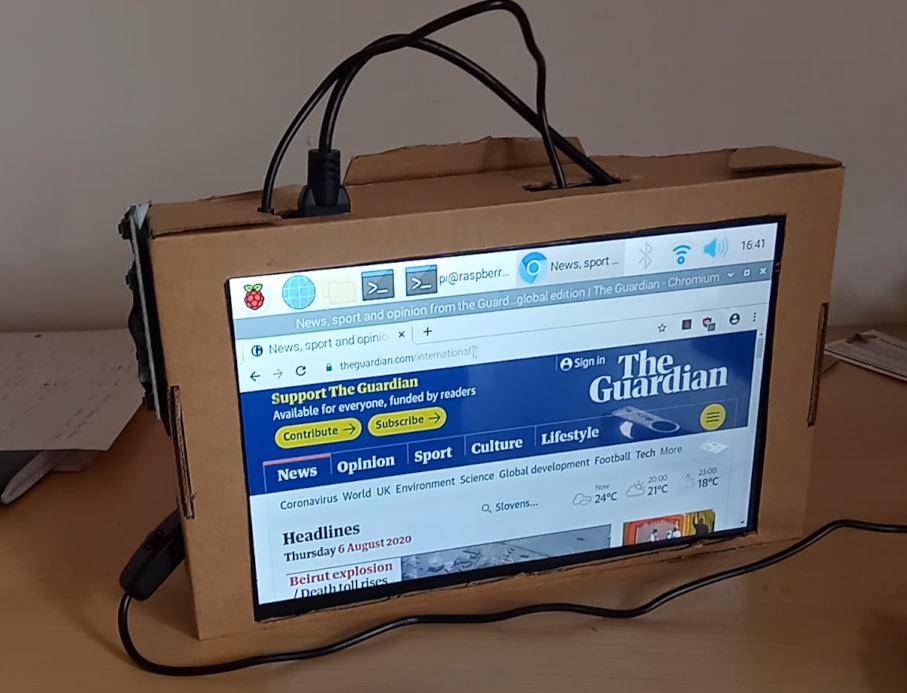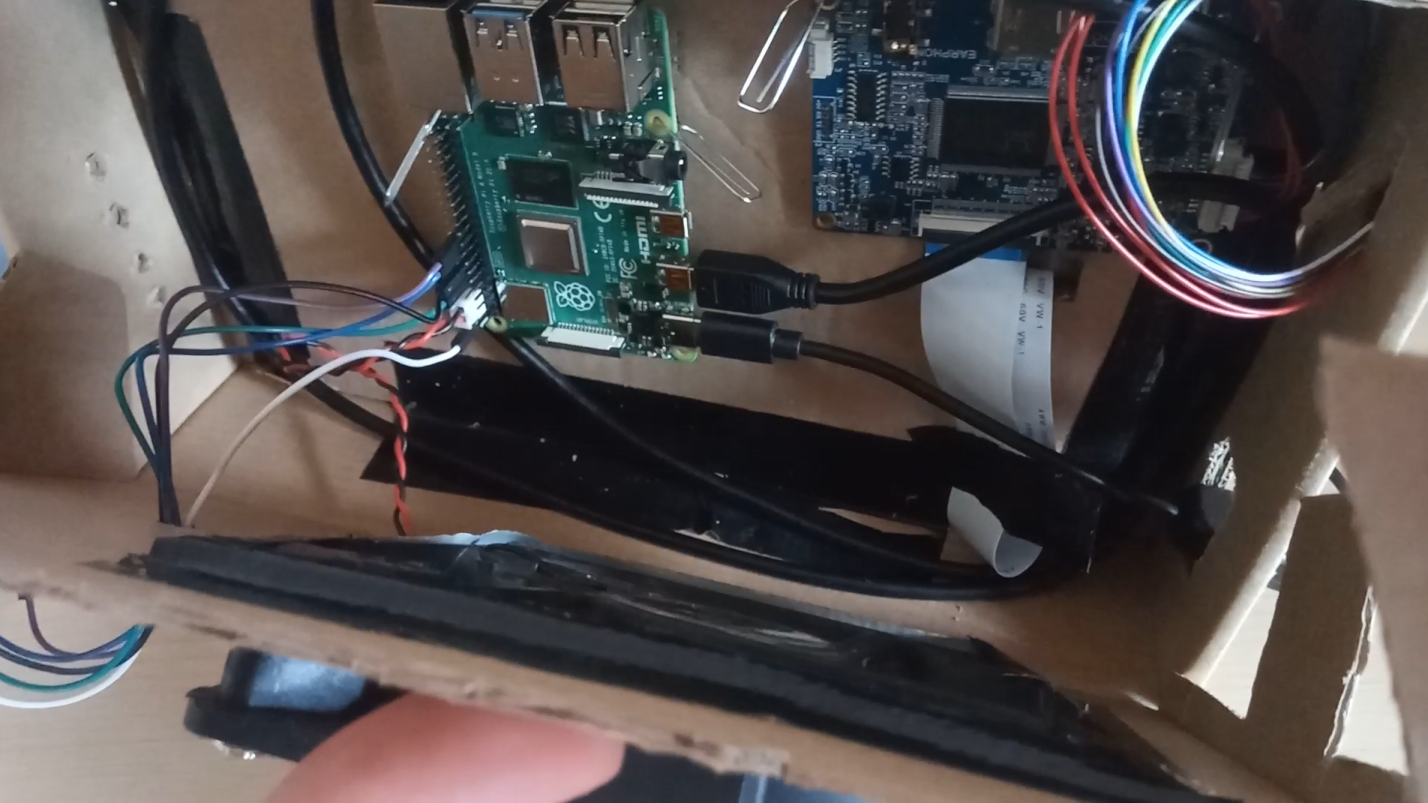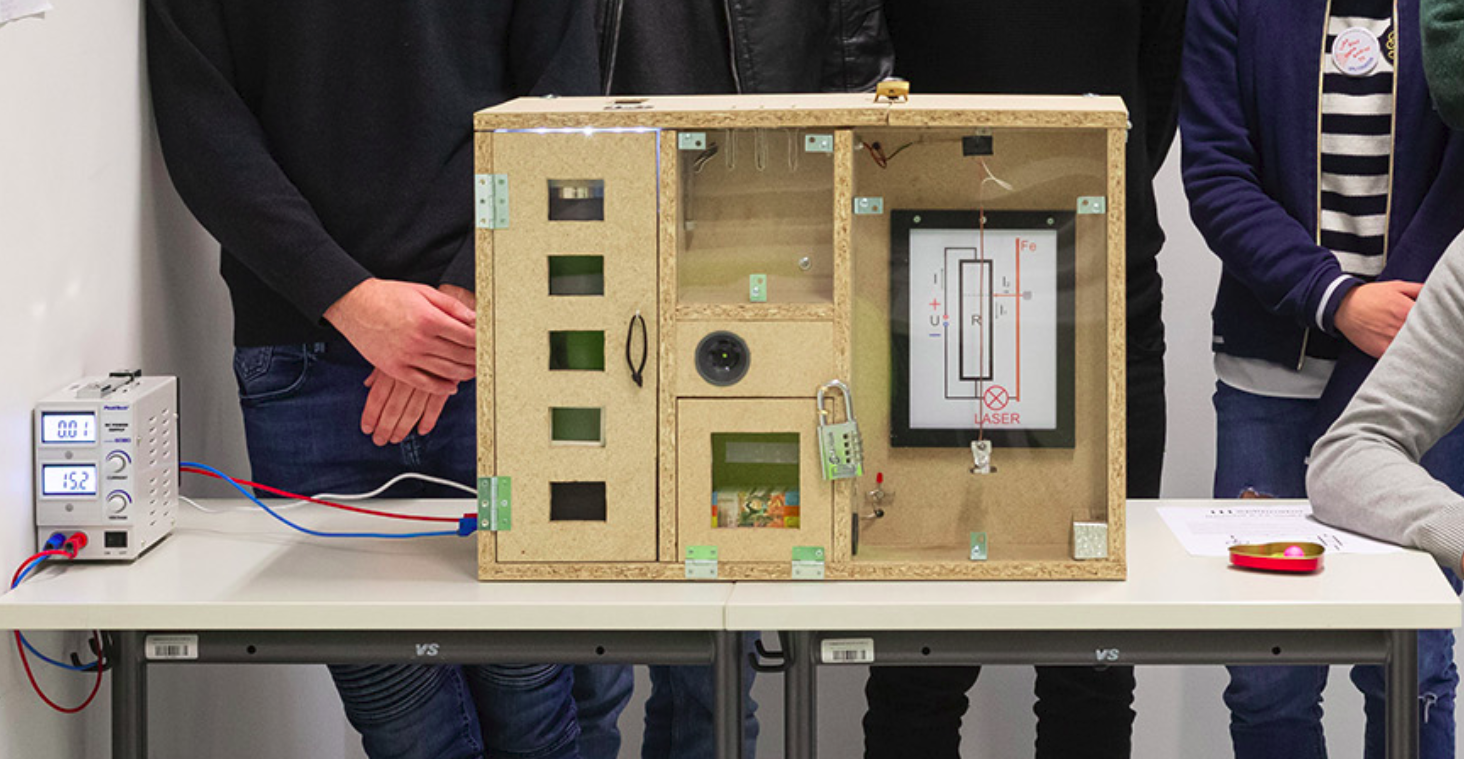Back in secondary school I bought a basic Arduino starter kit from Elegoo and it set off a whole Bastelmania! This article is about a few of the gadgets, whose images survived, that I’ve been working on during that time.
Door alarm#
This was a stupid idea, but I found a lot of small boxes in the cellar and decides to use them as the housing for my projects - the whole electronics would be neatly packaged within the box, leading to this silly little invention.
The Alarminator would inform me whenever somebody would enter my room without me knowing.
Velodrome lap counter#
The Velodrome lap counter was a small Raspberry-Pi computer which used the ultrasound sensor from the Elegoo. I really like little compact devices and even made a Python Tkinter GUI for the lap counting - sadly I don’t have a picture of the GUI anymore but I do have pictures of the device itself and even the interior - I completely forgot it even had a ventilator for the screen.


The device would count laps correctly in open spaces, but the velodrome in Novo Mesto has the misfortunate property of echoing too much, misleading the sound-based counter 😅
Mutarotation sensor#
Lactose or milk sugar has a rather interesting property! Lactose forms two stereoisomers (enantiomers to be specific), these are two forms of the same molecule that are effectively mirrored and cannot be spacially superimposed, they are called α-lactose and β-lactose. Stereoisomerism can sometimes result in different chemical properties and modified chemical pathways - the best example of this are trans-unsaturated fats which are less healthy than their chiralic counterparts, even though they have the same chemical formula. A-lactose and β-lactose are both naturally occuring and even covert between each other depending on the temperature. Luckily for us both forms of lactose have roughly the same chemical properties, though β-lactose is minimally more soluble and thus minimally sweeter.

However what makes lactose very interesting is that lactose can rotate polarised light! It is said to be optically active. What is even crasier is that α-lactose and β-lactose rotate polarised light differently and it is possible to measure their polarisation at various temperatures. That’s exactly what I did (I even performed the measurements even -10 and -20 °C by adding salt to the mixture) - by measuring the rotation of polarised light I managed to determine the concentration of both isomers of lactose and this gave rise to the following sensor build with an Arduino Nano that used a fotoresistor and a servo with a polariser:
To be fair though my sensor was too inaccurate, so I had to use the lab equipment, but it was a fun project idea.
Splitinator#
The Splitinator was the name of a safe we built for a secondary school competition in the construction and cracking of physical safes - it involved a surprising amount of moving parts and sensors all controlled by a single Arduino Uno - one of the tasks was blowing a little ball into the right hole by regulating the air flow using a hyperboloid tunnel inspired by this video:
It was an incredibly fun project and here’s how the safe looked like from the outside:
